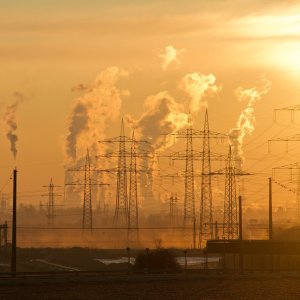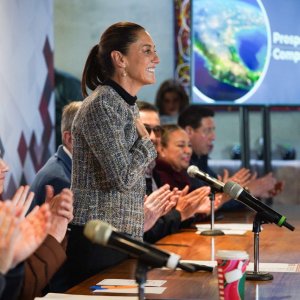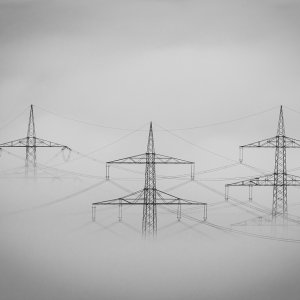
Leveling the Field Through Clean Energy Certificates
Imagine a soccer team with unlimited access to resources, with the ability to monopolize the world’s greatest talent. With all the Messis, Ronaldos, and Pélés imaginable, the team would be able to dominate the playing field unchallenged. This is the situation in which CFE and PEMEX found themselves prior to the 2013 Energy Reform, but now that the private sector is able to enter the market, the transfer window is wide open and a new arena has been formed. As part of the endeavors aimed at creating an electricity market, the government, in collaboration with the private sector, had to foster the creation of an environment in which all the actors could operate under the same conditions. To the extent that there are no specific subsidies or benefits granted by the government, a question mark remains over how renewable energy projects, particularly those that are not legacy projects, are going to be able to compete. Leonardo Beltrán, the Undersecretary of Energy Transition and Planning, emphasizes the creation of tradable clean energy certificates as a solution. “The point of these certificates is to level the playing field so that new teams can come and develop their game.”
The certificates work in a cap-and-trade scheme, an economically conservative approach to control greenhouse gas emissions. This method can be described in simple terms. The “cap” sets a maximum allowable level of pollution, and if companies exceed their emission allowance, they are penalized. The “trade” refers to the creation of a market for carbon allowances that will incentivize companies to comply or undergo restrictions.
The less a company emits, the less it pays, so less pollution is in its economic interest. Pollution cuts are transformed into profit, making them attractive and powerful incentives. If the amount of clean energy in a generator’s mix is below the established percentage, it will have to buy clean certificates from an actor whose clean energy production is above the established target. This will create a market and those who need to buy certificates will push for a low price, forcing the prices to drop and helping to achieve the established goal at the lowest cost. The use of clean energies is incentivized because users obtain both energy at low prices, and energy certificates.
According to the terms stated in Article 123 of the Law of the Electricity Industry, suppliers, participating qualified users, and end users who obtain their power from decentralized sources, as well as interconnection contract holders, both public and private, are expected to comply with the Clean Energy Certificates (CEL) requirements. Raquel Bierzwinsky, Counsel at Chadbourne & Parke, explains that energy generators will be assigned one certificate per megawatthour produced from clean sources. The generators that either do not generate clean energy or that operate on a mix will also be assigned CELs but under a different formula. Beltrán claims players are required to present their certificates every three years. This gives players the chance to establish the number of certificates necessary and catch up on the quota, creating the incentives to make sure that the rules will not change and that the terms remain fair. CEL requirements will not be enforced until 2018. Bierzwinsky explains that the government is giving a three year period for the open market to get established and for market participants to get used to the idea of a wholesale electricity market and the trading of the certificates. “It is not an immediate obligation, and I would assume it would be dramatic for all these companies to have to adjust to this in a very quick period.”
As stated in Article 165, Fraction VI, of the Law of the Electricity Industry, CRE will be able to impose a fine of between six and 50 times the minimum wage for each megawatt-hour of noncompliance in the acquisition of the certificates. “CRE will oversee the imposing of the fines. The Commission will also administer the certificates and fine companies that do not deliver certificates at the end of an established period,” states Former CRE Commissioner Francisco Barnés. State-owned companies, in addition to paying the fines, will have to face the public responsibility of non-compliance with targets. Barnés explains that CFE will have to make sure that it has clean certificates for the next 25 years, for which every year it will be obligated to open bids through CENACE. “The existing contracts and plants are not enough, so CFE will have to convene bids. This approach will provide certainty because it will replace the IPP contracts that CFE used for renewables.”
Richard Wells, President of the Lexington Group, was involved in the group that proposed cap-and-trade in the US for the control of sulfur dioxide emissions. “The US was dealing with acid rain, so the electric utilities were burning low-sulfur coal and selling it in New England. EPA wanted to regulate it, so they performed an analysis on the cost of regulation,” he recalls. “We decided to set up a market where the electric utilities could exchange the right to emit. This meant that the most efficient ones could produce more and sell their reductions to the less efficient ones.” Wells believes the system worked incredibly, and this is backed by several figures. According to the Environmental and Health Results of 2012, the acid deposits between 1989 to 1991 and 2010 to 2012 decreased by 59% across the Eastern US. Air quality also went through a radical change between the periods 1989 to 1991 and 2010 to 2012, with average particulate concentrations of sulfate decreasing by 59% in the MidAtlantic, 57% in Midwest, and 63% in the Northeast of the US
Wells says the cap-and-trade system was replicated to deal with climate change when this became a global issue. Initially he considered the scheme promising, but he changed his mind for a number of reasons. “In sulfur dioxide, there are around 100 sources, whereas in carbon, there are millions of sources. In sulfur dioxide, there was one country, while in carbon dioxide, there are 194 countries. Kyoto was doomed from the outset. We wasted ten years of carbon reduction trying to make it work, and now each country is making individual commitments.”
As for the initiatives Mexico has pushed, Wells praises the carbon tax, mainly because it aligns with the Porter hypothesis, which states that countries with more stringent environmental regulations gain an advantage because they are forced to adjust. “Carbon tax imposes a short-term loss that drives innovation, something that we have to push in Mexico. When other countries follow suit, Mexico will have an advantage because, eventually, everyone will require a carbon tax.” On the other hand, Wells thinks green certificates will be more problematic because they would have to be industry-specific in order to avoid complications and prevent the certificates market from collapsing. “The first obstacle is establishing a baseline for green certificates. It was simple enough with sulfur because there were only 100 plants and they all had the same technology. In a much broader sector, it becomes extremely complicated. I am not sure that I see the point of cap-and-trade because a straightforward tax would have the same effects.”
There is a considerable amount of skepticism surrounding clean energy certification. The authorities, however, are confident that CELs will give renewables the push they need without the need for feed-in tariffs or other incentives. Jesús Serrano, Commissioner at CRE, says CELs monetize all the support required by renewables, therefore, adding another supporting mechanism in a competitive environment would decrease the amount of economic resources resulting from CELs. “Since these certificates are designed in a way that demand and supply will determine their value, it is expected that additional revenues obtained by clean energy generators will be enough to cover the difference in costs against conventional generation technologies. If additional incentives are given, the aforementioned difference will decrease, and the price of CELs will decrease too,” he explains. In this sense, the total additional revenues for clean energy generators will remain the same. “Finally, we have to keep in mind that cash support mechanisms do not yield fewer benefits than material support, so CELs guarantee the most results, mainly participation in clean energy generation, with a given social cost, which is the price of the certificates.”
Barnés is also confident about this system because it has yielded positive results in certain areas. In addition to decreasing carbon emissions, he believes they will harness a fruitful market and push the development of renewables. In this vein, Beltrán says that due to the international nature of the electricity industry, companies are used to playing outside. Now the sector is bringing international practices to Mexico, taking into account the lessons learned from other countries’ experiences. Eduardo Reyes, Director of Energy and Infrastructure Strategy at PwC, says one of the biggest risks similar certificates have encountered in the past is the price volatility, but if the mechanisms begin with long-term tenders, then there is a long-term vision of the price, and thus the volatility of the prices is reduced. However, other experts like Bierzwinsky believe it will take a couple of years to determine whether the clean energy certificates alone will be able to boost the renewable energy industry.
The Guidelines on the Criteria for the Awarding of Clean Energy Certificates and the Requisites for their Acquisition states that CELs will be awarded for a 20-year period to:
I. Clean energy centrals that begin operations after August 11, 2014.
II. Power plants that generate energy from clean sources that began operations before August 11, 2014, provided they have increased their clean energy output. In this case, the 20-year period will begin the moment the project aimed at increasing the clean energy output becomes operational. The amount of CELs will correspond to the generated clean energy that exceeds:
- The average value of the clean energy generated by the power plant between 2012-2014, which only includes the period in which the plant has operated, and
- The average value of the clean energy generated by the power plant ten years prior to the expansion project, which only includes the period in which the plant has operated
III. Clean energy centrals whose capacity was excluded from a Legacy Interconnection Contract with the aim of including it in an Interconnection Contract in accordance with the law, for the period in which the contract holder has the right to include said capacity in the Legacy Interconnection Contract. In this case, the number of CELs will correspond to the amount of clean energy generated with said capacity.















